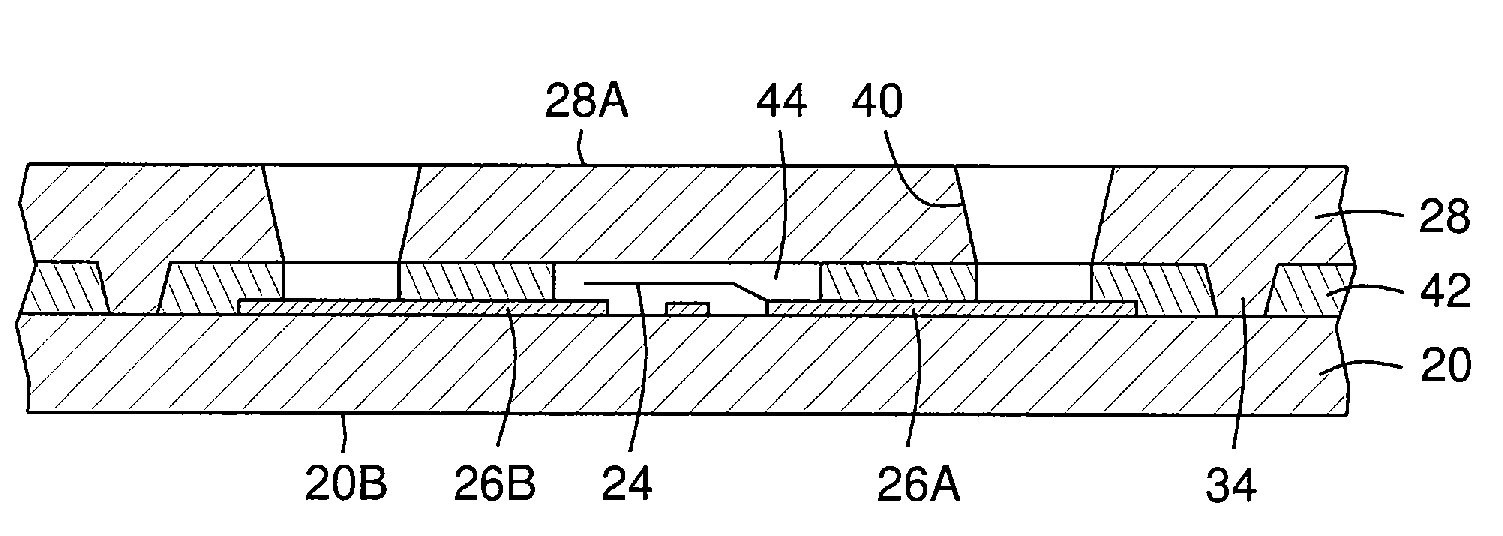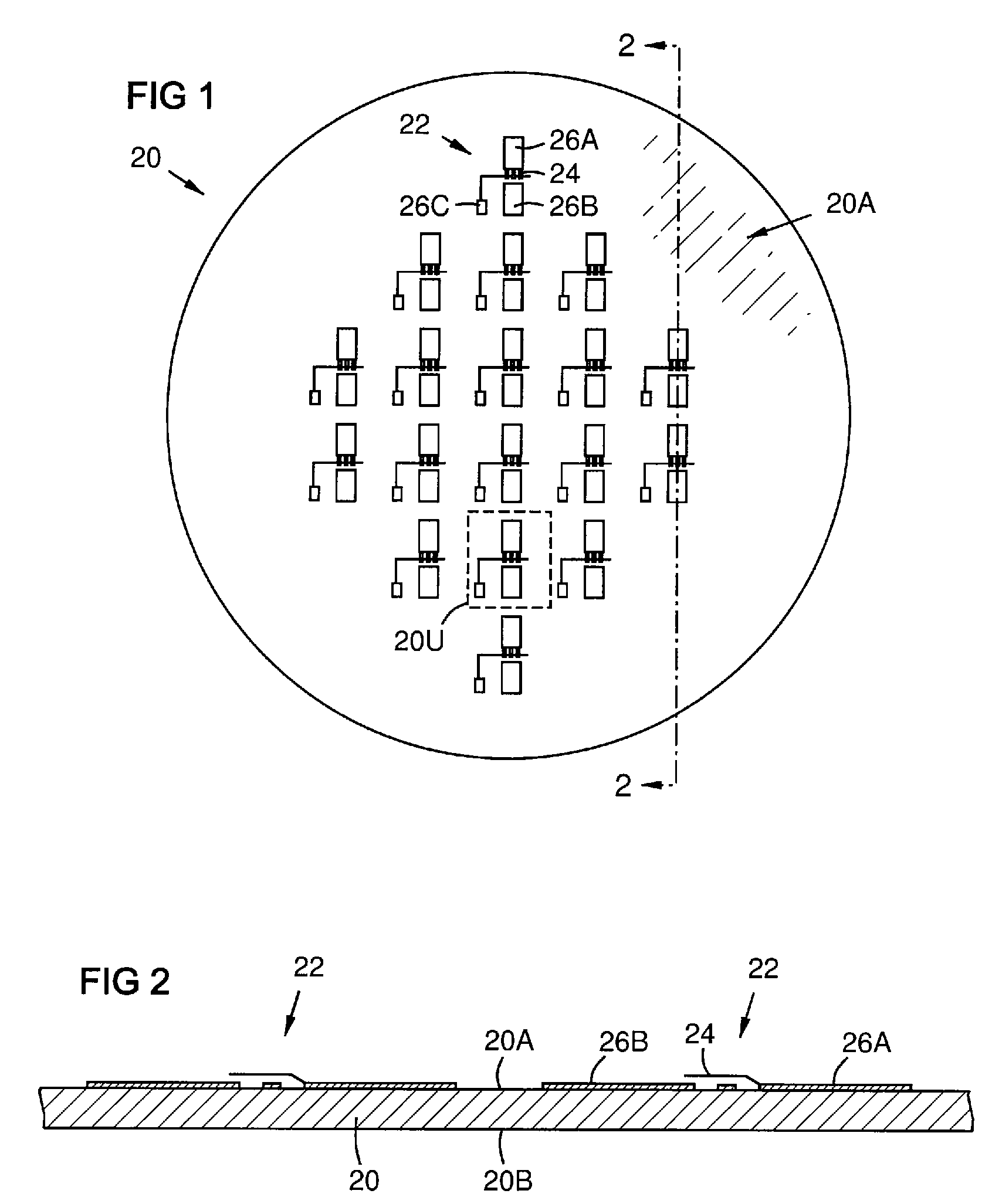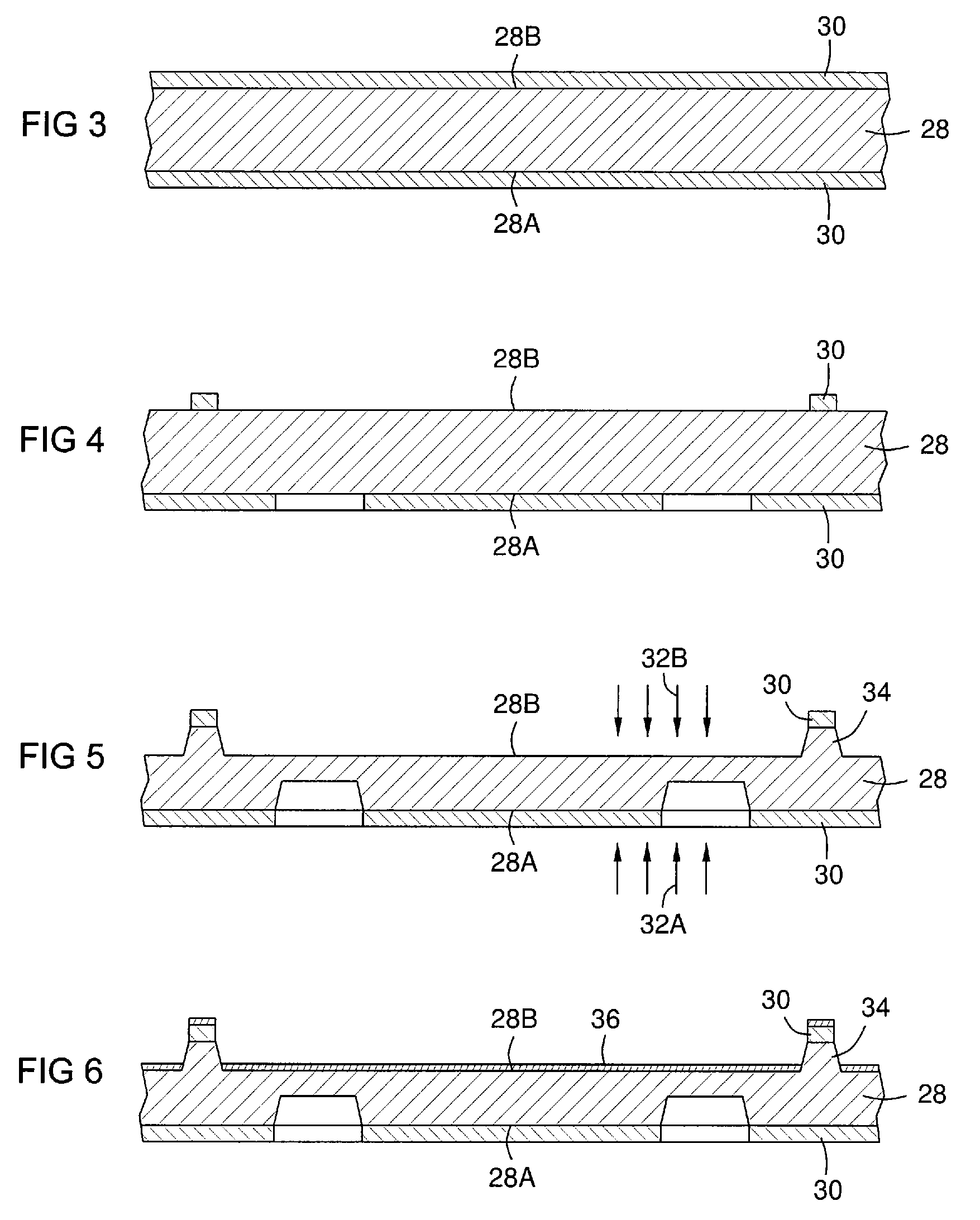Sealed wafer packaging of microelectromechanical systems
a technology of microelectromechanical systems and wafers, which is applied in the direction of semiconductor devices, semiconductor/solid-state device details, electrical apparatus, etc., can solve the problems of device failure, introducing constraints, and dicing producing random particles that can contaminate and disable some microelectromechanical devices, so as to improve the registration of adhesive sheets
- Summary
- Abstract
- Description
- Claims
- Application Information
AI Technical Summary
Benefits of technology
Problems solved by technology
Method used
Image
Examples
Embodiment Construction
[0042]The present inventors have innovatively recognized that certain properties of an adhesive sheet embodying aspects of the present invention are conducive to an improved MEMS package and fabrication process, as will be described in greater detail below. In one example embodiment, the adhesive sheet can be a thermoplastic material. Some thermosets like epoxy or epoxy-based adhesives outgas during the cross-linking process. This gas can enter a MEMS device cavity, limiting control over the cavity environment. A thermoplastic does not need to cure, because there is no cross-linking involved with the bonding process. A thermoplastic also does not necessarily need an adhesive layer on either of the bonding surfaces. Some epoxies and other adhesives need such additional adhesive layer(s) to ensure proper bonding. The adhesive sheet is also an electrical insulator that enables passing electrical traces through the bond line without having to passivate them. The adhesive sheet can be fo...
PUM
 Login to View More
Login to View More Abstract
Description
Claims
Application Information
 Login to View More
Login to View More - R&D
- Intellectual Property
- Life Sciences
- Materials
- Tech Scout
- Unparalleled Data Quality
- Higher Quality Content
- 60% Fewer Hallucinations
Browse by: Latest US Patents, China's latest patents, Technical Efficacy Thesaurus, Application Domain, Technology Topic, Popular Technical Reports.
© 2025 PatSnap. All rights reserved.Legal|Privacy policy|Modern Slavery Act Transparency Statement|Sitemap|About US| Contact US: help@patsnap.com



